On Monday, March 3rd I was in the field taking in early signs of spring and adding items to my to do list. Native Meadow mowing. Three Northern Harriers soaring in the wind, one of them an adult male. A nice look at a Golden-crowned Kinglet. I walked by the Esopus Creek to see if there were any waterfowl when I saw movement at the side of a fallen branch, half submerged into the Esopus Creek. It took me a minute to realize that it was a River Otter! With a long dark body, the otter was busy taking strong bites of a large fish. After a few moments, the otter slipped underwater, poked its head above the water, making just they eyes, nose, and ears visible, then swam down the creek.
On the morning of Wednesday, March 5th I was in the field adding more items to the spring to do list and had to make a stop near the irrigation pond. As I walked around the path to the pond, there was the otter again! This time sitting on the thin ice layer that remained over two thirds of the pond. The otter was laying down on the edge of the ice, occasionally sliding into the water, moving from one spot to another. As I crept closer, I noticed there were two piles of fish remains that the otter was swimming back and forth to.
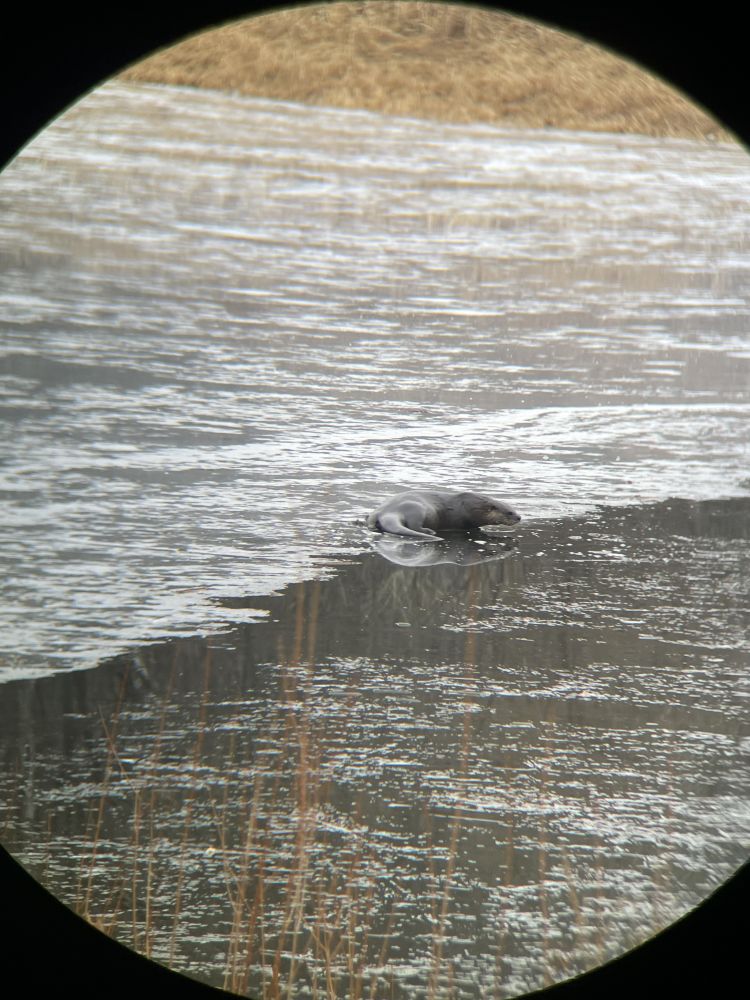
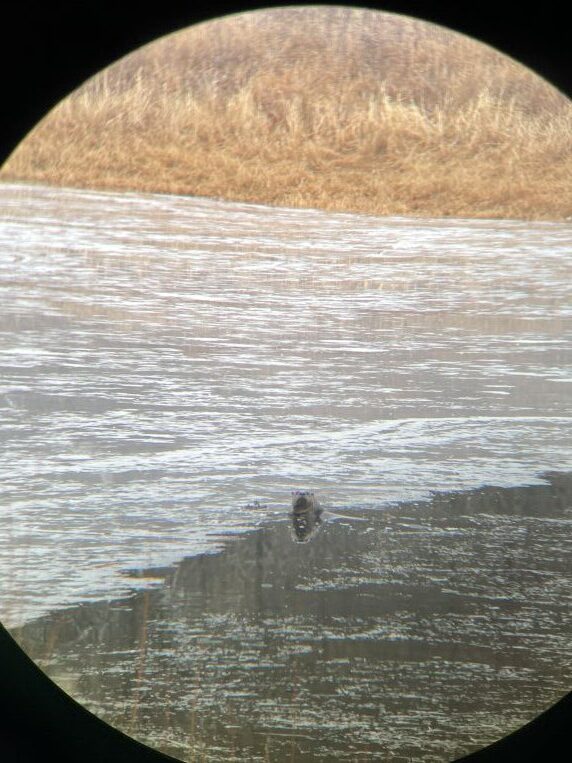
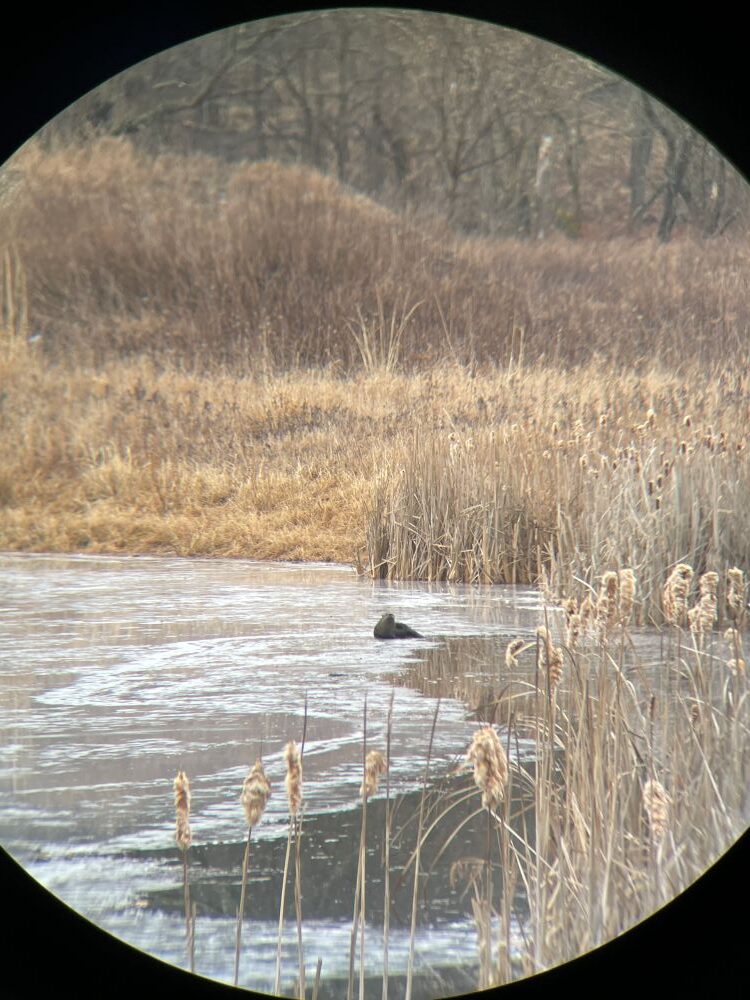
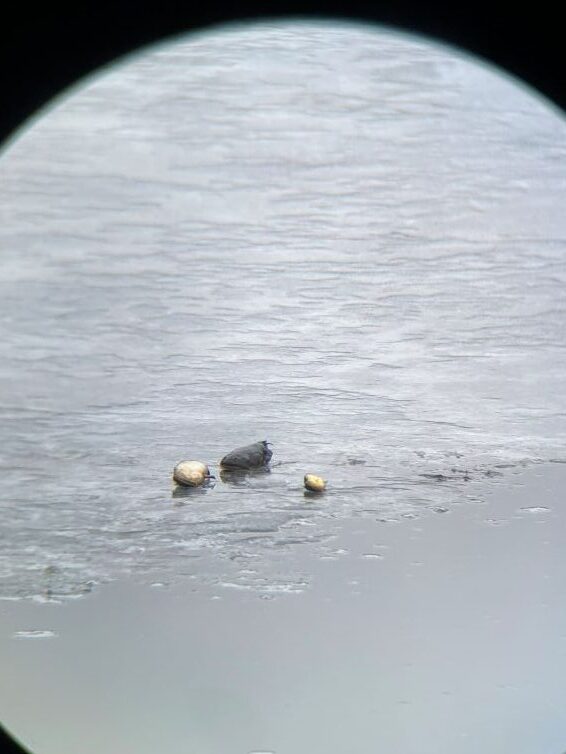
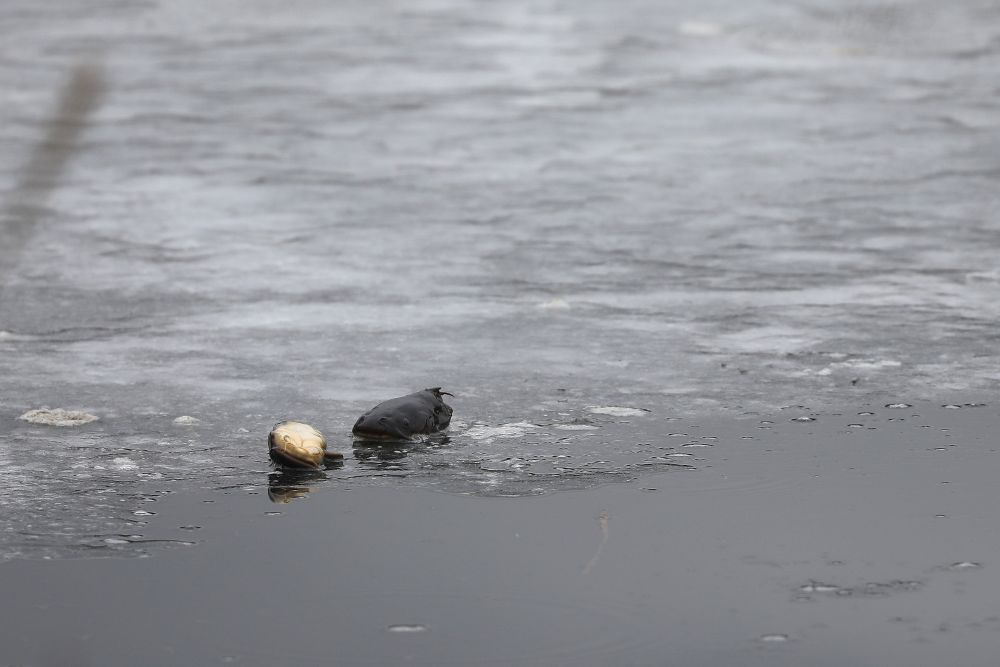
North American River Otters (Lontra canadensis) are semiaquatic mammals and members of the weasel family. They have muscular bodies, thick tapered tails, and webbed feet, all great for swimming. Their thick whiskers are used for sensing prey in mud and finding their way around murky water.
River Otter diet primarily includes fish, but they will opportunistically feed on amphibians, crustaceans, juvenile turtles, or other aquatic invertebrates available. They tend to leave fish scales, shells and any remains of their meals in piles – much like the fish remains the otter left at the irrigation pond. Otters may be found in rivers, lakes, ponds, small streams, marshes and other inland wetlands. Much of their range and habitat overlaps with beavers and they often rely on the burrows of beaver and other mammals for their dens. It was no surprise that this otter was seen at the Esopus Creek and at the irrigation pond a few steps away from the creek – there is high beaver and muskrat activity in this area.
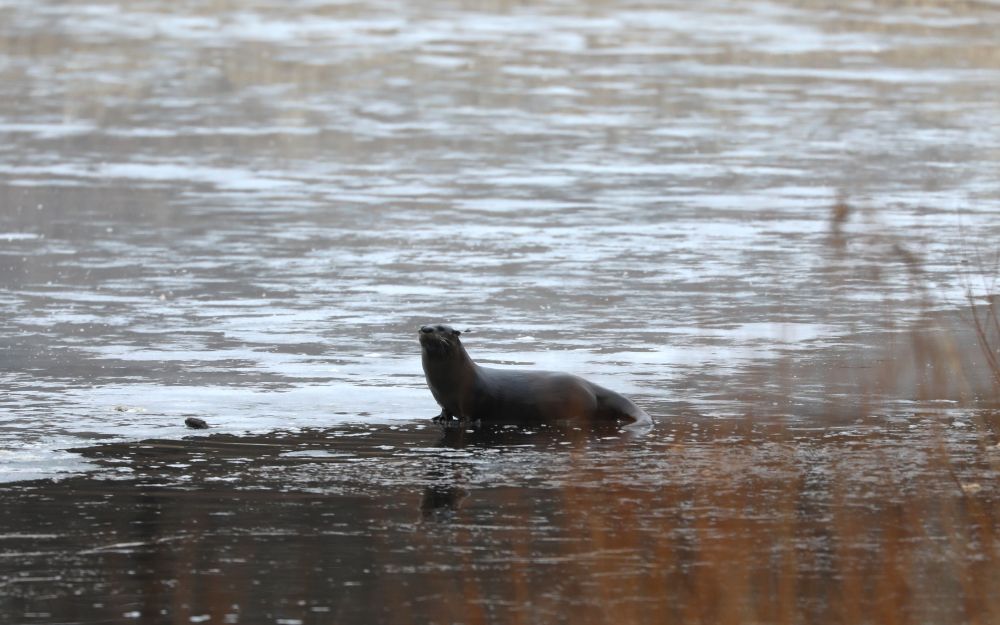
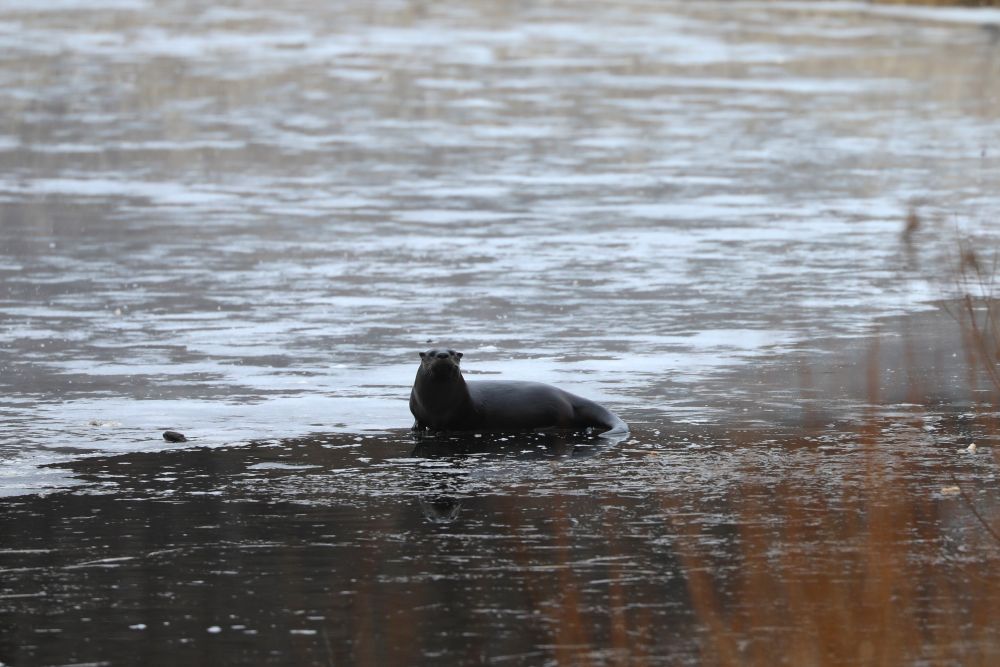
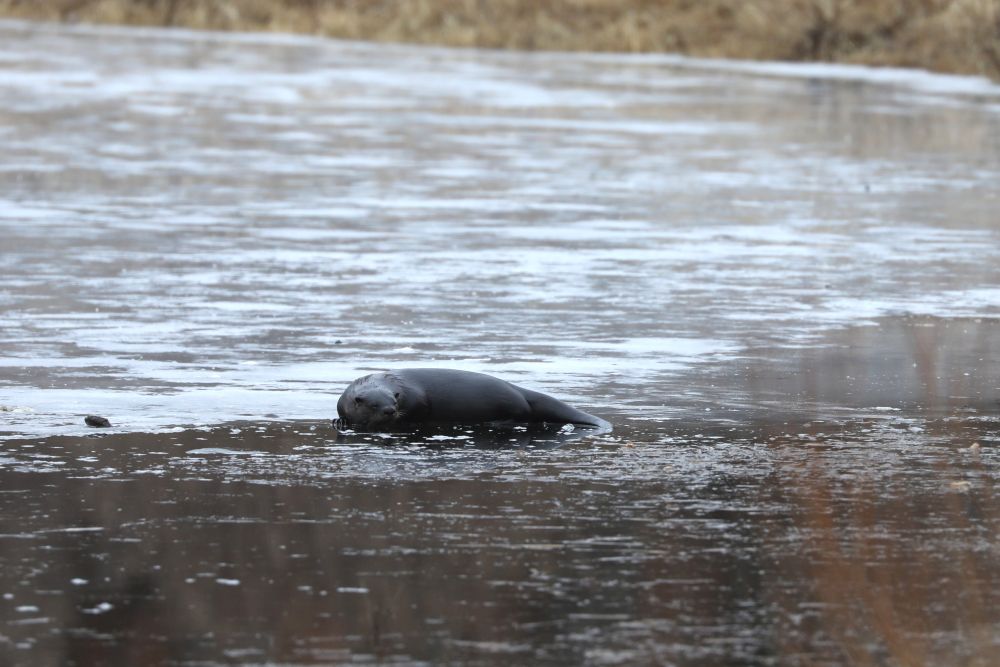
Prior to European settlement in what is now New York state, river otters and many other fur bearing mammals were abundant in the landscape. Throughout the years, unregulated harvest, habitat destruction, and water pollution led to a large decline in their populations, specifically in the western and central region. The New York River Otter Project in the 1990’s was created to restore populations in these regions by live-trapping otters in the Adirondacks and Catskills and releasing them in target areas. This project has created positive results. Now, the Department of Environmental Conservation (DEC) continues to monitor river otter populations across the state.
Though the populations of river otters in our area have stayed relatively healthy, it is not every day that one gets to see one in the wild. Winter can be a time for planning, data entry, and rest. Encountering the otter at the farm on a cloudy winter day was a nice reminder that whether we pay attention or not, wildlife is using the farm landscape year-round.
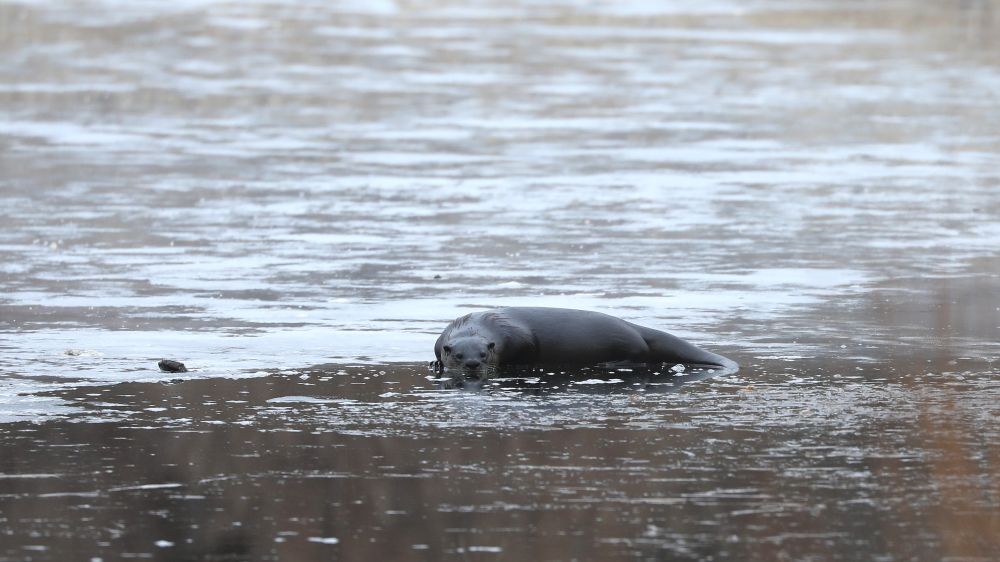
Resources:
https://dec.ny.gov/nature/animals-fish-plants/river-otter
https://extapps.dec.ny.gov/docs/administration_pdf/otter1213.pdf
Reid, F. (2006). A field guide to mammals of North America north of Mexico (4th ed.). Houghton Mifflin Company.
